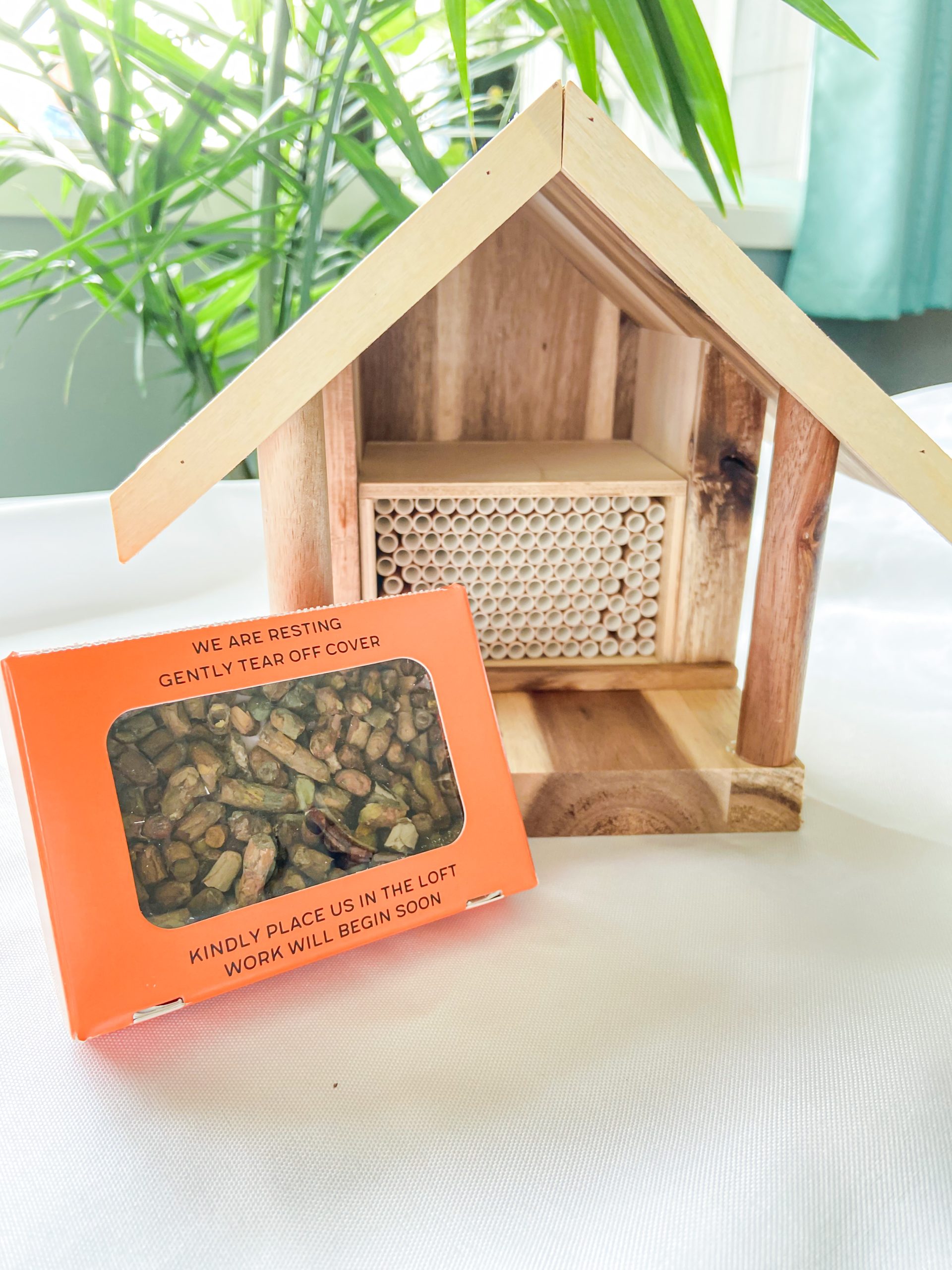Now that autumn is in full swing and the temperatures are dropping, you may wonder what this means for your bee house and cocoons happily perched in your yard. There are a few simple but essential steps to keep your leafcutter bee cocoons safe until next summer.
Below, we have outlined a complete winterizing guide, from initial cocoon storage to key preparations for the 2026 growing season. Keep reading to learn the ins and outs of cocoon care from your friends at Kind Bee Farms!
Feeling a Freeze in the Air? Time for Storage!
The first step is knowing when to put the cocoons in storage. Do not store them while it is still warm and sunny out! Even if it is a bit crisp in the mornings, wait until autumn temperatures drop close to freezing or after the first frost before bringing the cocoons inside.
Be extra diligent if you live in a region where fall temperatures tend to fluctuate, as extreme warm and cold spikes can negatively affect the larvae’s development.
Bees Are Happily Sleeping—Don’t Wake Them Up!
Caution: Do not remove the cocoons from their nesting tubes! Keep the box of cocoons securely stored in the bee house.
Our sturdy paper tubes keep the larvae safe as they grow from eggs into super pollinators. Next summer, once all the bees are grown, they will chew out of their cocoons and fly out to work!
Once all the tubes are empty, they will be free to either be reused or tossed and replaced with a fresh set of tubes (this is recommended to prevent mould and disease).
Stay On Top of Winter Weather Foibles
Winter weather means moisture and harsh temperatures, which can negatively affect cocoons in the wrong environment. The mamma bees did their job by wrapping the larvae in leaves to protect the cocoons during the winter. Still, preventing anything from disrupting the bees’ developmental process is important.
When it’s time to put your bee cocoons into storage, follow these steps:
- Find a cool, dry spot to store the bee house. A garage, shed, or cold room in your home will be perfect!
- Make sure the cocoons are away from water or heat sources to prevent premature hatching.
- Store the house and cocoons in your Kind Bee Farms shipping box (if you still have it) for an extra cushion!
- Check the storage area regularly to ensure consistent temperature and no water pooling or leaks. Otherwise, you can start making plans for their release in the summer!
Prepare for Their Summertime Release
If you want to get the most out of your super pollinators during the 2026 growing season, here are a few ways you can prepare:
Pre-order a box of bees: While most of your cocoons will hatch next summer with proper storage, you will still need to order more bees! Only 1/3 of the bees that hatch from your cocoons will be female, so a new box will ensure you have enough pollinators for your garden!
(Subscribe to our newsletter and be the first to know when pre-orders go live!)
Plan your garden around what leafcutter bees like: The more plants for leafcutter bees, the better pollination you’ll receive!
It’s never too early to plan your garden for the upcoming season, and you can use this time to source and research plants that leafcutter bees are drawn to the most (you can check out our Blog for some suggestions).
Since leafcutters are low-flying bees, they prefer low-growing plants like berry bushes, pansies, and perennials. They are also drawn to vibrant colours like blue, green, and ultraviolet!
Learn how to safely release the bees: Once temperatures start warming to 70°F (20°C), you can begin the hatching procedure. Here’s a simple step-by-step process to remember:
- Start the hatch indoors to prevent temperature fluctuations. It can take up to several weeks for any hatching to begin, so bee patient!
- Remount the bee house in a safe, prepared spot where the bees can find it and your plants with ease.
- Once the temperatures outside are consistently 70°F and above, you can release the bees into your garden!
Get a Jump on the 2026 Growing Season with Kind Bee Farms
Winterizing your leafcutter bee cocoons is a simple and important process for keeping them safe during the cold months. With proper care and attention, you can enjoy watching these superpollinators fly from plant to plant next summer, cutting leaves for new cocoons and spreading pollen for your garden to flourish!
You can find replacement bees and nesting tubes in our Shop. Subscribe to our newsletter to stay updated on upcoming pre-order dates for 2026!

